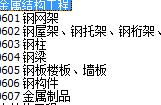Aims 目的: The aim of a study is what the purpose is of a piece of research. For example- to investigate if age affects memory. 研究的目的是指一项研究的目的是什么。例如,调查年龄是否会影响记忆。
Hypothesis 假设: The prediction of what the results will be. This can be directional, in which the expected effect of a variable is stated, or non-directional, where a difference is predicted, but not the nature of the difference. For example 对研究结果的预测。这可以是方向性的,即说明一个变量的预期效果;也可以是非方向性的,即预测有差异,但不说明差异的性质。比如说 :
- Directional 方向性: young people will do better in a memory test than older people 年轻人在记忆测试中会比老年人做得更好。
- Non-directiona 非方向性l: there will be a difference between young and older people in performance on a memory test 年轻人和老年人在记忆测试中的表现会有差异。
The above hypotheses are known as the experimental/alternative hypothesis. There is also the null hypothesis, which predicts that there will be no difference between the conditions, for example ‘there will be no difference between young and older people in performance on a memory test’. 上述假设被称为实验性/替代性假设。还有一个无效假设,它预测条件之间不会有差异,例如 "年轻人和老年人在记忆测试中的表现不会有差异"。
Directional hypotheses are used when previous research indicates what the results will be, for example if other studies have found that young people have better memories than older people, we can predict that the result will go the same way. If there is no previous research, or previous research is contradictory, and a non-directional hypothesis would be used. 当以前的研究表明结果将是什么时,就会使用方向性假设,例如,如果其他研究发现年轻人的记忆力比老年人好,我们就可以预测结果将是一样的。如果没有以前的研究,或者以前的研究是相互矛盾的,就会使用非方向性假设。
Independent and dependent variables 独立变量和因果变量: In an experiment, the variable manipulated or changed by the researcher is the independent variable (IV). The result, which should be affected by the change in IV, is the dependent variable (DV). All other variables should be controlled as far as possible, so that it is the IV that affects the DV and nothing else. For the purposes of experiments, IVs and DVs must be operationalised- put into a form which is measurable. For example, ‘Age’ (the IV) could be operationalised as ‘participants between 20 and 25 years of age and participants between 60 and 65 years of age’. ‘Memory ability’ (the DV) could be operationalised as ‘the score on a test of memory’ or ‘the number of words successfully recalled’. This can be used in a hypothesis as follows:
在一个实验中,研究者操纵或改变的变量是自变量(IV)。应该受到自变量变化影响的结果是因变量(DV)。应尽可能控制所有其他变量,以便影响DV的是IV而不是其他。为了实验的目的,IV和DV必须被操作化--变成一种可测量的形式。例如,"年龄"(IV)可以被操作为 "20至25岁的参与者和60至65岁的参与者"。记忆能力"(DV)可以操作为 "记忆测试的分数 "或 "成功回忆的单词数量"。这可以在假设中使用,具体如下:

‘Participants between 20 and 25 years of age will score more highly on a memory test than participants between 60 and 65 years of age’. 20至25岁的参与者在记忆测试中的得分会比60至65岁的参与者高"。
This is an operationalised hypothesis, and it is directional, in this case. 这是一个操作化的假设,在这种情况下,它是有方向性的。
Variables & Control 变量和控制As well as the IV and DV, other variables exist which potentially affect the results of experiments. 除了IV和DV之外,还存在其他可能影响实验结果的变量。
Extraneous variables 外来变量: Variables other than the IV which may have an effect on the DV if not controlled for. For example, in the memory experiment, the intelligence and motivation levels of the participants may have an impact on their score on the memory test. The researcher should take steps to minimise the impact of these, for example by giving participants an IQ test beforehand and eliminating any particularly high or low scores from the sample.
除IV之外的变量,如果不加以控制,可能会对DV产生影响。例如,在记忆实验中,参与者的智力和动机水平可能会对他们在记忆测试中的得分产生影响。研究者应该采取措施将这些影响降到最低,例如,事先给参与者做一个智商测试,并从样本中排除任何特别高或特别低的分数。
Confounding variables 混杂变量: Variables other than the IV that have (or almost certainly have) had an effect on the DV. We know they have had an effect because they vary systematically with the IV. For example, in the memory experiment, if all of the young participants are given the memory test at 9am, and all of the older participants are given the test at 7pm, the time of day has acted as a confounding variable, as it has varied systematically with the IV. Therefore, any difference in the results of the two groups may be due to the difference in time of day, rather than the difference in age. The effect of this can be reduced or eliminated by testing both age groups at the same time of day.
除IV之外的其他变量已经(或几乎肯定已经)对DV产生了影响。我们知道它们有影响,因为它们与IV有系统的变化。例如,在记忆实验中,如果所有的年轻参与者都在上午9点接受记忆测试,而所有的年长参与者都在晚上7点接受测试,那么一天的时间就成了一个混杂变量,因为它与IV有系统的变化。因此,两组结果的任何差异都可能是由于一天中时间的差异,而不是年龄的差异。这方面的影响可以通过在一天中的同一时间测试两个年龄组来减少或消除。
Demand characteristics 需求特征: These are clues which participants respond to when in an experimental situation, in which they try to guess the aim or intended outcome of a study and therefore change their behaviour accordingly. They are a form of participant reactivity (people not behaving naturally as they know they are being studied). The effect of these can be reduced by not revealing the aim of the study to the participants, or by using an independent measures design, so that participants only take part in one of the experimental conditions.
这些是参与者在实验情况下的反应线索,他们试图猜测研究的目的或预期结果,从而相应地改变他们的行为。它们是参与者反应性的一种形式(人们在知道自己被研究时行为不自然)。如果不向参与者透露研究目的,或者采用独立测量设计,使参与者只参加其中一个实验条件,就可以减少这些影响。
For example, if participants are told the aim of the memory study, the young participants may try really hard on the memory test, as they may guess that this is the predicted outcome of the study. They act in ways that they think will please the experimenter. Alternatively, the older participants may try really hard on the test in order to prove the prediction wrong. Either way, the participants do not act naturally, so reducing the validity (correctness) of the results. 例如,如果告诉参与者记忆研究的目的,年轻的参与者可能会在记忆测试中非常努力,因为他们可能猜到这是研究的预测结果。他们的行为方式是他们认为会让实验者满意的。或者,年长的参与者可能在测试中非常努力,以证明预测是错误的。无论哪种方式,参与者的行为都不自然,所以降低了结果的有效性(正确性)。

Investigator effects 调查者的影响: These are any unwanted influences that the investigator/experimenter communicates to the participants which affects their behaviour. For example, being more encouraging towards the young participants in the memory test, as this is the expected result. These can be minimised by the use of standardised instructions, or the double-blind procedure. 这些是调查员/实验者向参与者传达的任何不必要的影响,从而影响他们的行为。例如,在记忆测试中对年轻的参与者更加鼓励,因为这是预期的结果。这些影响可以通过使用标准化的指示或双盲程序来减少。
Randomisation 随机化: This is a way of controlling for the effects of extraneous/confounding variables. Allocating participants to tasks, selecting samples of participants, and so on, should be left to chance as far as possible, to reduce the investigator’s influence on a study. 这是一种控制外在/混杂变量影响的方法。将参与者分配到任务中,选择参与者的样本,等等,应尽可能留给机会,以减少调查者对研究的影响。
Standardisation 标准化: This is where the experience of an experiment is (as far as possible) kept identical for every participant, for example using standardised instructions. This reduces the effect of extraneous/confounding variables. 这是指(尽可能地)使每个参与者的实验经历保持一致,例如使用标准化的说明。这减少了外在/混杂变量的影响。
Single and double-blind 单盲和双盲: The single-blind procedure is when the participant does not know the aim of the study. This helps reduce the possibility of demand characteristics from affecting the results. Double-blind is when where the investigator who deals with the participants also does not know the aim of the study. This helps reduce the chance of investigator effects, as the investigator will not unconsciously communicate the aim to the participants. 单盲程序是指参与者不知道研究的目的。这有助于减少需求特征影响结果的可能性。双盲是指与参与者打交道的调查员也不知道研究的目的。这有助于减少调查员效应的机会,因为调查员不会不自觉地将目的传达给参与者。
Control groups 对照组: These are used for the purpose of comparison, often when testing the effects of a drug, for example. One group of participants (the ‘experimental group’) will be given the real drug, another group a placebo (fake drug). This can allow the researcher to directly compare the results of the two groups. If the experimental group improves then it is likely that this is because of the drug. 对照组用于比较的目的,例如在测试一种药物的效果时经常使用。一组参与者("实验组")将被给予真正的药物,另一组则是安慰剂(假药)。这可以让研究人员直接比较两组的结果。如果实验组的情况有所改善,那么这很可能是由于药物的作用。
Sampling 抽样调查
In a study, the population is the target group of people the researcher is studying (e.g. ‘males in their 20s’). The sample is the group of people selected to take part in the study, drawn from the target population. In order to select a sample, a sampling technique will be used 在一项研究中,人口是研究者要研究的目标人群(例如,"20多岁的男性")。样本是指从目标人群中挑选出来参与研究的人群。为了选择样本,将使用一种抽样技术:
Random 随机: Each member of the target population has an equal chance of being selected. For example, using a random name or number generator, or picking names out of a hat. 目标人群中的每个成员都有同等的机会被选中。例如,使用随机姓名或数字生成器,或从帽子里挑出名字。
- Evaluation 评价: The researcher cannot influence the selection of participants, but the sample could, by chance, end up being unrepresentative. 研究者不能影响参与者的选择,但样本可能因偶然性而最终不具有代表性。
Systematic 系统性的: A participant is selected in a systematic way, for example, selecting every 10th person from the electoral roll. This is decided through a sampling frame, where a list of the target population is put in order. 以系统的方式选择参与者,例如,从选民名单中选择每10个人。这是通过抽样框架来决定的,即把目标人群的名单按顺序排列。
- Evaluation 评价: The researcher cannot influence the selection of participants, and it is likely to be representative. 研究者不能影响参与者的选择,而且有可能具有代表性。
Stratified 分层的: The make-up of the sample reflects the make-up of the target population. For example, if studying teachers, as there are more female than male teachers, there should be more female participants. If 60% of teachers are female, this means that in a sample of 20, there should be 12 female and 8 male teachers. Once these quotas are identified, the participants to fill them are selected at random from the target population. 样本的构成反映了目标人群的构成。例如,如果研究教师,由于女教师多于男教师,所以应该有更多的女性参与者。如果60%的教师是女性,这意味着在20个样本中,应该有12名女性和8名男性教师。一旦确定了这些配额,就会从目标人群中随机选择填补这些配额的参与者。
- Evaluation 评价: random techniques are used, so the researcher can’t influence the selection. The sample produced is representative of the target population, as it has been designed to be so. However, it is hard to represent all the ways in which people are different. 采用随机技术,所以研究者不能影响选择。产生的样本在目标人群中具有代表性,因为它被设计成这样。然而,它很难代表人们的所有不同方式。
Opportunity 机会: Participants are selected from whoever is most easily available. For example, standing in the street one afternoon and approaching passers-by to see if they want to take part. 参与者是从最容易得到的人中挑选出来的。例如,某个下午站在街上,接近路人,看他们是否愿意参加。
- Evaluation 评估: this is convenient, as it is much less time-consuming and costly than some of the other methods. However, there is a high chance of obtaining an unrepresentative sample, as large groups of the population have no chance of being involved. Also the researcher controls which participants are selected, which could lead to bias. 这很方便,因为它比其他一些方法的耗时和成本要低得多。然而,获得不具代表性的样本的可能性很大,因为人口中的大群体没有机会参与。另外,研究者控制哪些参与者被选中,这可能导致偏见。
Volunteer 志愿者: Participants put themselves forward to take part in a study. For example, a newspaper or internet advert is placed asking for volunteers, and people respond agreeing to take part. 参与者自己提出来参加研究。例如,在报纸或互联网上刊登广告,征集志愿者,人们回复同意参加。
- Evaluation 评估: this is easy and convenient for the researcher, but it is open to volunteer bias, whereby only certain types of people (the type that put themselves forward) take part. This reduces the representativeness of the sample. 这对研究者来说很容易,也很方便,但它容易产生志愿者偏见,即只有某些类型的人(自己提出的类型)参加。这就降低了样本的代表性。

These are small-scale trial runs of an experiment. The purpose is to check that the procedure works smoothly and that there are no misconceptions. Any problems can be addressed and the procedures amended for the real study. 这些是小规模的实验试运行。其目的是检查程序是否顺利进行,是否存在误解。任何问题都可以被解决,并为真正的研究修改程序。
Experimental Design 实验设计This refers to how participants are allocated to experimental conditions. 这指的是如何将参与者分配到实验条件中。
Independent groups 独立组: There are different participants in each condition. This would be appropriate for the memory experiment, as the participants need to be different ages in each condition. 每个条件下都有不同的参与者。这适合于记忆实验,因为每个条件下的参与者需要有不同的年龄。
- Advantages 优点: participants are less likely to guess the aim of the study, and there are no order effects- effects arising from having completed two tasks, for example becoming more practised and doing better in the second condition, or getting bored/fatigued and doing worse in the second condition 参与者不太可能猜到研究的目的,而且没有顺序效应--完成两个任务后产生的效应,例如,在第二个条件下变得更加熟练,做得更好,或者在第二个条件下感到无聊/疲劳,做得更差。
- Disadvantages 缺点: there may be differences between the two groups of people- e.g. intelligence, age, gender, which may cause differences in the results. Twice as many participants are needed. 两组人之间可能存在差异--例如智力、年龄、性别,这可能导致结果的不同。需要双倍数量的参与者。
Repeated measures 反复测量: One group of participants completes both/all of the conditions of the experiment. For example, to test the effect of listening to music on problem-solving ability, participants are given problems to solve whilst listening to music, then another set of problems to solve in silence. 一组参与者完成了实验的两个/所有条件。例如,为了测试听音乐对解决问题能力的影响,在听音乐时给参与者解决问题,然后在沉默中解决另一组问题。
- Advantages 优点: there are no participant variables between the conditions, and fewer participants are needed 条件之间没有参与者的变量,需要的参与者较少。
- Disadvantages 缺点: there are order effects which may influence the results. This can be addressed by counterbalancing- half the participants do one task followed by the second (A followed by B) and the other does the opposite (B followed by A). Also, participants may work out the aim of the study, like in the music example, and may change their behaviour. 存在着可能影响结果的顺序效应。这可以通过平衡的方式来解决--一半的参与者先做一个任务,再做第二个任务(A后是B),另一半做相反的任务(B后是A)。另外,参与者可能会发现研究的目的,比如在音乐的例子中,他们可能会改变自己的行为。
Matched pairs 匹配的一对: As independent groups, but participants are ‘matched’ on qualities relevant to the experiment. For example, in the music study, one participant is allocated to the ‘music’ condition, and another who is similar in terms of age, IQ and occupation is allocated to the ‘silence’ condition. This involves pre-testing participants on certain measures in order to match them up. 如同独立的小组,但参与者在与实验相关的品质上被 "匹配"。例如,在音乐研究中,一名参与者被分配到 "音乐 "条件下,另一名在年龄、智商和职业方面相似的人被分配到 "沉默 "条件下。这涉及到对参与者的某些措施进行预先测试,以使他们相匹配。
- Advantages 优点: order effects and demand characteristics are less likely to have an impact, and participant variables are reduced 顺序效应和需求特征不太可能产生影响,而且参与者的变数也减少了。
- Disadvantages 缺点: participants can never be matched perfectly, so there might still be some participant variables. Matched pairs is the most time-consuming and expensive design to use. 参与者不可能完全匹配,所以可能仍然存在一些参与者的变量。匹配配对是最耗时和最昂贵的设计,可以使用。
Structured or unstructured 结构化的或非结构化的: The researcher may decide to focus on particular behaviours or actions when conducting the observation, and only record these- this is the structured method (more likely with several participants). Alternatively, they may just record everything that is going on- this is the unstructured method (more likely with fewer participants). 在进行观察时,研究者可能决定将重点放在特定的行为或动作上,并且只记录这些行为或动作--这是结构化的方法(对于几个参与者来说更有可能)。或者,他们可能只是记录正在发生的一切--这是非结构化的方法(在参与者较少的情况下更有可能)。
- Evaluation 评价: Structured 结构化 - the data is much easier to analyse to spot trends and make conclusions (it is likely to be quantitative). But, the data is in less detail as only certain things have been recorded. Unstructured- data is much harder to analyse, and there is more risk of observer bias (only recording things that fit with the observer’s preconceived ideas). But, the data in in more detail and is much ‘richer’. 数据更容易分析,以发现趋势并做出结论(可能是定量的)。但是,数据不太详细,因为只记录了某些事情。非结构化的数据更难分析,而且观察者偏见的风险更大(只记录符合观察者先入为主想法的事情)。但是,数据的细节更多,也更 "丰富"。
Behavioural categories 行为类别: This is the process of making a target behaviour measurable, by breaking it down into observable components. ‘Aggression’ could be broken down into shouting, hitting, punching and so on. This allows different observers to use the same checklist of behaviours, as they are not (or, should not be) subjective. 这是一个使目标行为可测量的过程,通过将其分解为可观察的组成部分。攻击性 "可以被分解为喊叫、打人、打拳等等。这使得不同的观察者可以使用相同的行为清单,因为它们不是(或不应该是)主观的。
- Evaluation 评价: To be useful, categories should be unambiguous and objective, as far as possible, and should cover all possible behaviours. Categories should not overlap (e.g. ‘hitting’ and ‘striking’ would be too similar). 为了有用,分类应尽可能明确和客观,并应涵盖所有可能的行为。类别不应重叠(例如,"打人 "和 "打人 "会过于相似)。
Sampling methods 取样方法: In unstructured observations, continuous recording is often used, where everything that happens is recorded. Because this is often not feasible, researchers usually use one of two sampling methods to record data. Event sampling is when a record is made of each example of a particular behaviour during the observation (e.g. counting the number of times someone shouts out). Time sampling is when behaviours are recorded in a specific timeframe (e.g. recording the behaviours shown during a one-minute time frame every five minutes).
在非结构化观察中,通常采用连续记录的方式,将发生的一切都记录下来。因为这通常是不可行的,研究人员通常使用两种抽样方法中的一种来记录数据。事件抽样是指在观察过程中对某一特定行为的每个例子进行记录(例如,计算某人喊叫的次数)。时间抽样是指在一个特定的时间范围内记录行为(例如,每五分钟记录一次在一分钟时间范围内显示的行为)。
- Evaluation 评价: Event sampling 事件取样 - good for recording infrequent behaviours that may be missed otherwise. But, other important behaviours may be missed. Time sampling- reduces the number of observations needed, but the behaviour recorded may be less representative of the whole observation. 适合于记录不经常出现的行为,否则可能会被错过。但是,其他重要的行为可能会被遗漏。时间取样--减少了所需的观察次数,但记录的行为可能不太能代表整个观察过程。
Inter-observer reliability 观察者之间的可靠性: Usually there will be more than one person observing behaviours, to lessen the risk of observer bias affecting the results. Observers will use the same behavioural categories, and will observe the same behaviours in a pilot study, comparing their findings with the other observer(s). The results are compared, and the level of reliability is worked out by correlating the pairs of observations made. If necessary, behavioural categories can then be modified if inter-observer reliability is low.
通常会有一个以上的人观察行为,以减少观察者偏见影响结果的风险。观察者将使用相同的行为类别,并在试点研究中观察相同的行为,将他们的发现与其他观察者进行比较。对结果进行比较,并通过对观察结果的关联性来计算可靠性水平。如有必要,如果观察者之间的可靠性较低,可以对行为类别进行修改。

Questionnaires 调查表: Can be designed with open or closed questions. In addition, questionnaires can use Likert scales, where the responder indicates their depth of feeling (‘1= strongly agree, 5= strongly disagree’); rating scales, where a number is chosen to indicate strength of opinion (‘how important do you think respect for authority is- 1=not important at all, 5= extremely important’); and fixed-choice options where the responder has to select from a pre-determined response which matches their opinion (‘why do people obey orders? (a) Uniform (b) Location (c) Proximity (d) Personality’)
可以设计开放式或封闭式问题。此外,问卷可以使用李克特量表,由回答者表明他们的感受深度('1=非常同意,5=非常不同意');评级量表,选择一个数字来表示意见的强度('你认为尊重权威有多重要--1=完全不重要,5=极其重要');以及固定选择,回答者必须从预先确定的回答中选择符合他们意见的选项('人们为什么服从命令?(a)制服 (b)位置 (c)距离 (d)性格")
Interviews 面试: Most of these will be one-to-one with just the interviewer and interviewee, although sometimes they take place in groups. The list of questions to be asked will be drawn up, and the interview can be unstructured, structured or semi-structured. The interviewer aims to establish a rapport with the interviewee and make them feel comfortable. 大多数面试是一对一的,只有面试官和被面试者,尽管有时会以小组形式进行。要问的问题清单将被拟定,面试可以是非结构化、结构化或半结构化的。访谈者的目的是与受访者建立融洽的关系,使他们感到舒适。
Writing questions 写作问题: To work effectively, questions should 为了有效地发挥作用,问题应该:
- Be free of technical language (jargon) and unfamiliar terms (‘do you think the agentic state is a valid explanation for obedience?’) as most people will not know what they mean 不使用技术性语言(行话)和不熟悉的术语("你认为代理状态是对服从的有效解释吗?"),因为大多数人不知道它们是什么意思
- Avoid emotive language and leading questions (‘do you think the disgusting habit of smoking should be banned?’) which guide participants towards the answer you are hoping for 避免情绪化的语言和诱导性的问题(你认为应该禁止令人厌恶的吸烟习惯吗),这些问题会引导参与者走向你所希望的答案
- Not be ‘double-barrelled’- meaning two questions in one (‘do you think that smoking should be banned and anyone caught smoking sent to prison?’) as participants may agree with one half but not the other 不要 "双管齐下"--即两个问题合二为一("你认为应该禁止吸烟并将被抓到的人送进监狱吗?"),因为参与者可能同意其中一半,但不同意另一半
- Avoid double negatives (‘are you not unhappy?’) as these can be confusing 避免双重否定句("你不高兴吗?"),因为这可能会引起混淆。













